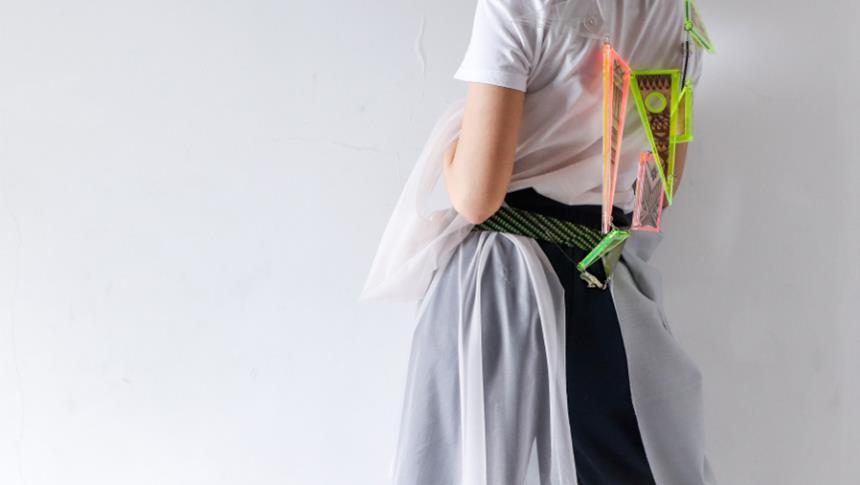“I don’t design clothes, I design dreams.” – Ralph Lauren, American fashion designer, philanthropist and founder of the Ralph Lauren Corporation.
Today’s global fashion industry made its first appearance in the mid-19th century and this field is now an increasingly popular career choice among students. If you are interested in pursuing a fashion design course, you should first find out what the career has to offer. This article will answer any questions you might have about the profession and help you understand if it’s the right choice for you. Read on!
Types of fashion designers:
- Fashion Accessory Designers: A fashion accessory designer is responsible for planning and designing the aesthetics and functionality of jewellery and other accessories. This category of fashion designers use their designing skills to create necklaces, earrings, handbags, bracelets, hats, scarves and many other accessory items.
- Footwear Designers: These type of fashion designers are responsible for creating innovative and practical shoe designs. They create all kinds of footwear, from athletic shoes to stilettos.
- Apparel Fashion designers: Also referred to as ‘clothing designers’, apparel fashion designers are responsible for creating designs for clothing items, ranging from formal wear and sportswear to informal clothes and even wedding dresses. While some apparel designers work directly with fashion houses, others have an independent practice. Apparel fashion designers can further be categorised into:
- Haute Couture Fashion designer: This category of designers create customised clothes for individual customers. They do not indulge in mass production of a garment design, instead they create exclusive clothing, with specific client measurements.
- Prêt-a-porter Fashion designer: Also called ‘ready-to-wear’ clothes, prêt-a-porter refers to factory-produced clothing. These designers work to produce their product for a limited number of people and these clothes are supposed to be worn without any alteration. To get the perfect fit, they aim to make use of the right material with the perfect cut, for the wearer.
- Mass Market Fashion designer: A mass market designer creates designs that appeal to a large group of people and the clothes are sold in the open market.
Skills required to become a fashion designer:
- Creativity skills: Since fashion is a creative field, artistic skills are essential to help you transform raw material into beautiful pieces of art.
- Drawing skills: Drawing is an important component of fashion designing as it enables you to transfer the ideas from your mind onto paper. A great way to improve is by taking sketching classes to put your drawing skills at practice.
- A keen eye for detail: To become a successful designer, you must have a fine eye for detail. While having an extremely good drawing and creativity skills is paramount, as are the intricate details in the design too.
- Visualisation skills: Strong visualisation skills are essential in the fashion industry as they will help you effectively use your imagination. The better your visualisation skills, the more accurately you will be able to present the design on paper.
- Communication skills: A major part of working in the fashion industry entails collaborating with fellow designers and clients to create the perfect look. Being able to explain your idea to the clients clearly is key, as well as understanding the clients’ desires and feedback.
- Competitive spirit: The fashion industry is continuously expanding, meaning more and more talented designers are entering the field to make their mark. In order to stand out, you will need determination and a competitive spirit which you can develop by trying to better your designs each day. Keeping track of the current trends in the fashion industry and modifying your designs accordingly will also help.
Career pathway to become a fashion designer:
Step 1: Pursue a bachelor’s degree in the relevant field and you can also opt to pursue a master’s degree to further expand your expertise.
Step 2: Take up internships to understand how the industry works and sharpen your skills with practical experience.
Step 3: Understand how a fashion business works, what the vital components of the industry are and learn networking skills from peers and colleagues.
Step 4: Create your fashion portfolio which you will need to showcase your designing expertise to your future employers and clients. Ensure the portfolio consists of a variety of designs and skills such as patterns and embroidery. You can also demonstrate your drawing skills by including the work that you created during your degree.
Step 5: Keep up with the latest trends, take note of what type of design is popular, which material is more appealing to clients and work on your designs accordingly.
After completing a fashion design degree, you can opt for any of the following jobs based on your specialisation:
- Fashion Buyer/Merchandiser;
- Fashion Marketer;
- Fashion Product Manager;
- Fashion Blogger;
- International Fashion designer.
Fashion design as a career can be challenging if you don’t have the right training or skills for the industry. London College of Contemporary Arts (LCCA) offers various fashion designing courses to help you enter the fashion world. To get more insights into what you can do after pursuing one of these fashion courses, read our blog “What should you do after a diploma in fashion design?” To check out the fashion courses offered by LCCA, click here.
This article was written by Meghdeep Patnaik and edited by Amelia Hayward-Cole.

